Discover 20 hidden attractions, cool sights, and unusual things to do in Lawrence (United States). Don't miss out on these must-see attractions: High Service Water Tower and Reservoir, North Andover, and North Canal Historic District. Also, be sure to include Lawrence Heritage State Park in your itinerary.
Below, you can find the list of the most amazing places you should visit in Lawrence (Massachusetts).
Table of Contents
High Service Water Tower and Reservoir
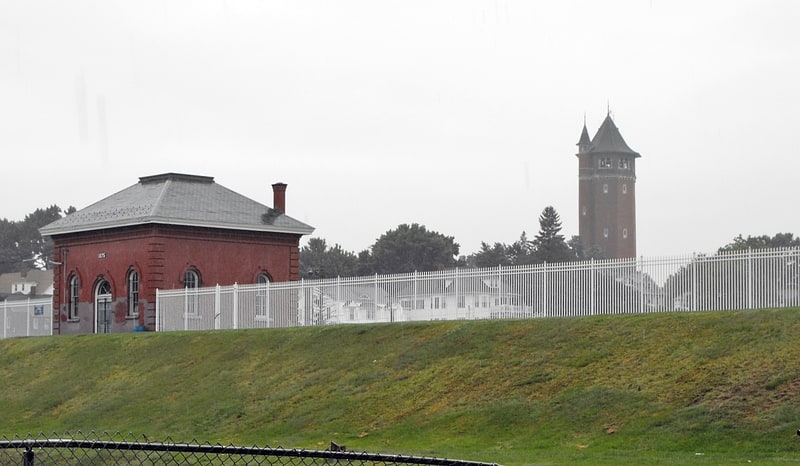
Historical landmark in Lawrence, Massachusetts. The High Service Water Tower and Reservoir, colloquially known as the Tower Hill Tower, is a public water supply facility off Massachusetts Route 110 in Lawrence, Massachusetts. The reservoir was constructed in 1874–75 to provide the city's public water supply, with a gatehouse designed by Charles T. Emerson, a Lawrence architect. The tower was built in 1896 as a high pressure standpipe or water tower. The tower stands 157 feet high, and is built out of red brick with granite trim. It is Romanesque in its style, and was designed by George G. Adams, a noted local architect who had been taught by Emerson. The standpipe inside the tower is of steel construction and is 102 feet in height. The area above the standpipe includes a balcony capped by a chateauesque roof, with round-arch windows providing views of the area. The main tower is octagonal in shape, with a narrow round staircase tower projection from one side.
The neighborhood surrounding the tower is known as Tower Hill, for obvious reasons. Although the hill and its accompanying neighborhood are associated with Lawrence, and the tower itself is located in, a small sliver of Tower Hill actually extends into the neighboring city of Methuen. Thus, it is sometimes necessary to clarify whether one is speaking of Tower Hill, Methuen or Tower Hill, Lawrence.
The tower and reservoir were listed on the National Register of Historic Places in 1978.[1]
North Andover
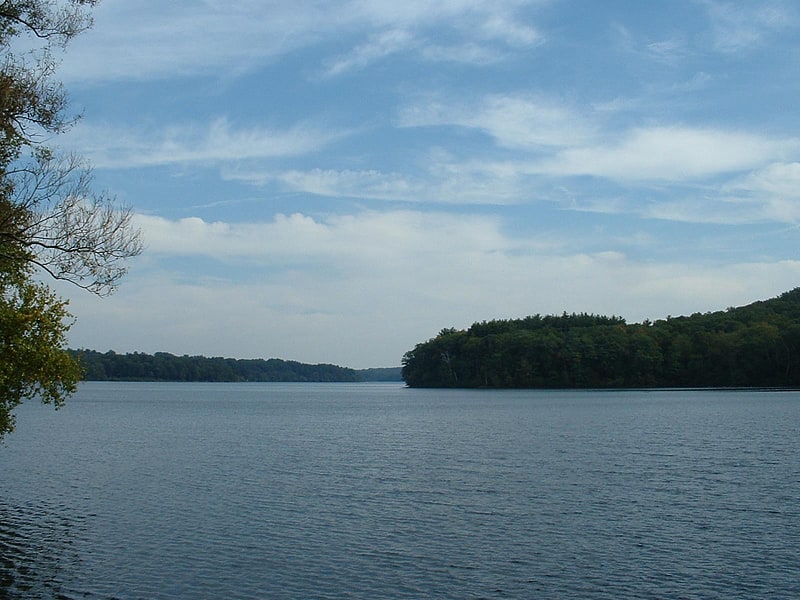
Town in Massachusetts. North Andover is a town in Essex County, Massachusetts, United States. At the 2020 census the population was 30,915.[2]
North Canal Historic District
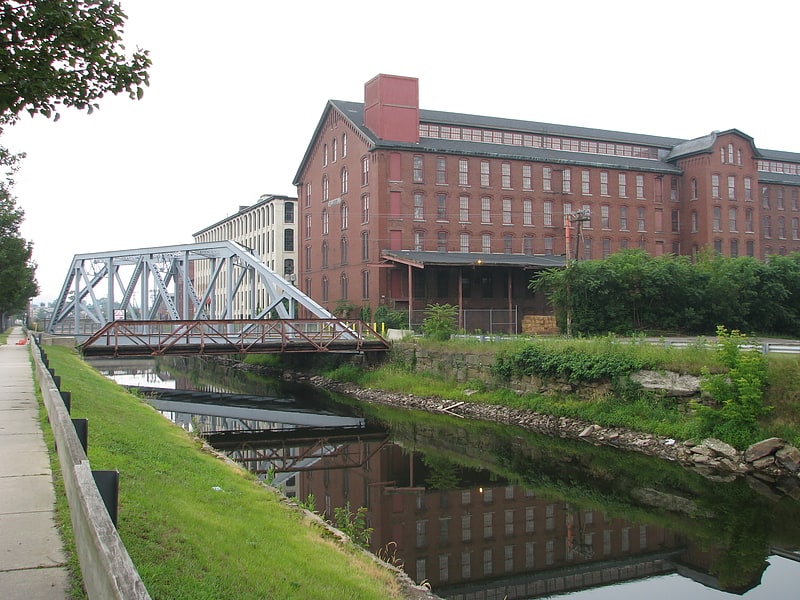
The North Canal Historic District of Lawrence, Massachusetts, encompasses the historic industrial heart of the city. It is centered on the North Canal and the Great Stone Dam, which provided the waterpower for its many mill complexes. The canal was listed on the National Register of Historic Places in 1975, while the district was first listed in 1984, and then expanded slightly in 2009.
The city of Lawrence was founded by industrialist Abbott Lawrence and the associates of the Essex Company as a model industrial city. In 1845 they company acquired land from then towns of Methuen and Andover and began construction on the North Canal and the Great Stone Dam. The work included dredging and building out of "new land", and effectively created a small island between the Merrimack River and the canal, whose outlet is at the mouth of the Spicket River. Work on these two major features was completed in 1848, and development of the city, which formally incorporated in 1853, proceeded from there. The historic district encompasses, in addition to the canal and the dam, the mill-related buildings on the island and on the north side of the canal, as well as a few buildings that front on Methuen and Union Streets, or the connecting side streets. The 2009 expansion of the district, included a single building, the Morehouse Bakery building at 5-9 Mill Street.[3]
Lawrence Heritage State Park
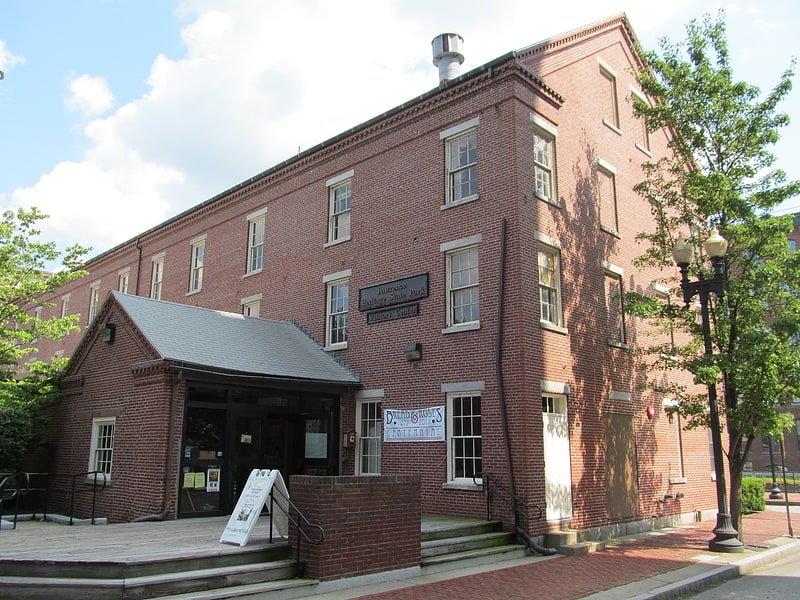
State park in Lawrence, Massachusetts. Lawrence Heritage State Park is a history-themed public recreation area dedicated to preserving the industrial heritage of Lawrence, Massachusetts. The state park comprises three separate units on or near the Merrimack River. It is managed by the Massachusetts Department of Conservation and Recreation.[4]
Address: 1 Jackson St, 01840-1613 Lawrence (Lawrence)
Moseley Wrought Iron Arch Bridge
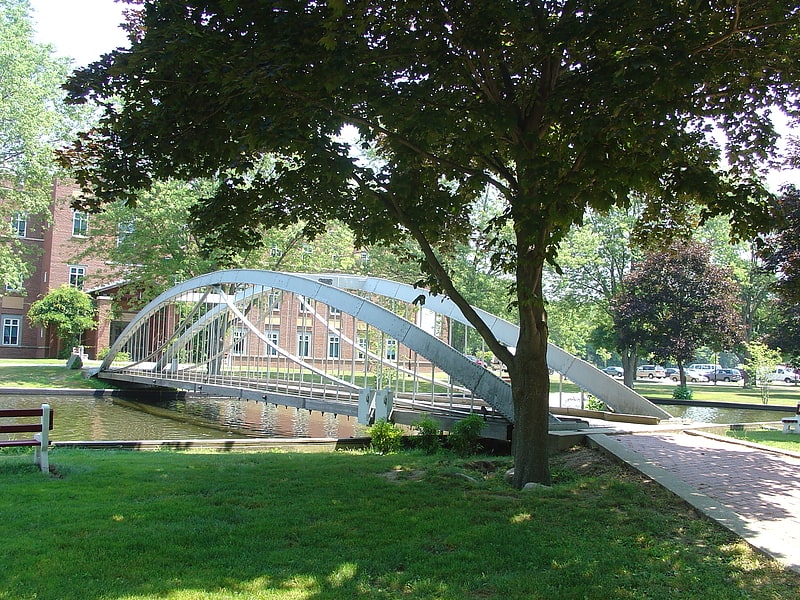
Tied-arch bridge in North Andover, Massachusetts. The Moseley Wrought Iron Arch Bridge, also known as the Upper Pacific Mills Bridge, is a historic, riveted, wrought iron bowstring arch bridge now located on the campus of Merrimack College in North Andover, Massachusetts. It was added to the National Historic Civil Engineering Landmark list in 1998 and was originally part of the North Canal Historic District on the National Register of Historic Place. It is the oldest iron bridge in Massachusetts, and one of the oldest iron bridges in the United States. It was the first bridge in the United States to use riveted wrought iron plates for the triangular-shaped top chord.
The bridge was completed in 1864 as Moseley Truss Bridge built by the Moseley Iron Building Works of Boston, to connect the Pacific Mills with Canal Street in Lawrence, Massachusetts, by spanning the North Canal. It partially collapsed in the late 1980s, but in 1989 it was removed to the Merrimack College campus in North Andover and was rehabilitated under the direction of Francis E. Griggs, Jr. Professor of Civil Engineering. It was placed over a campus pond as a footbridge, and was rededicated in this new location on October 23, 1995.[5]
Great Stone Dam

The Great Stone Dam was built between 1845 and 1848 on the site of Bodwell's Falls on the Merrimack River in what became Lawrence, Massachusetts. The dam has a length of 900 feet and a height of 35 feet.
Lawrence is in Essex County, Massachusetts, approximately 25 miles (40 km) north of Boston and only a few miles south of the New Hampshire border (Salem), located in the Merrimack Valley. The dam is 11 miles (18 km) downstream from Lowell and is visible from Route 28 (Broadway) in Lawrence and from behind the Pacific Paper Mill (now defunct).
The dam feeds two canals (North, re-built in 1848, and South, completed in 1896). At their peak, the North Canal provided up to 13,000 horsepower and the South Canal 2,000 horsepower; the Essex Company sold "mill rights" to its water power, allowing mills to use the energy provided. The North Canal existed before the dam, but was redeveloped both to better feed the mills and to accommodate the 30-foot (9.1 m) drop caused by the dam. About a mile in length, the canal had a guard lock and three lift locks with mitered gates. The locks were abandoned in the 1960s.
Today the dam is the site of a hydroelectric plant, completed in 1981, which is owned by Central Rivers Power USA (now parent company of the Essex Company, which still owns the dam). and the Lawrence Hydroelectric Associates.[6]
Address: 11 Merrimack Street, Lawrence (Lawrence)
The Stevens–Coolidge Place
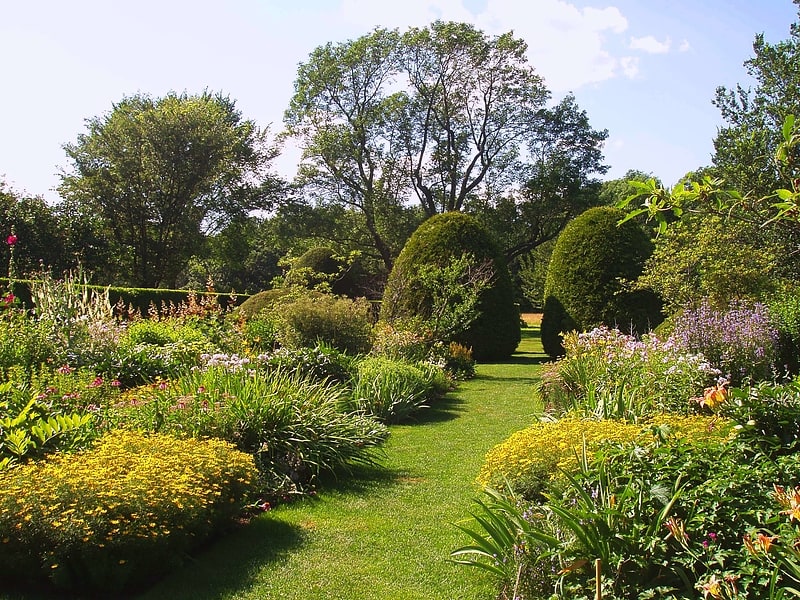
Museum in North Andover, Massachusetts. The Stevens–Coolidge House and Gardens, formerly known as Ashdale Farm, is a garden and historic home located on 91 acres at 153 Chickering Road in North Andover, Massachusetts. Helen Stevens Coolidge's family first acquired the farm in 1729, and from 1914 to 1962 it was her summer home with husband John Gardner Coolidge, diplomat, descendant of Thomas Jefferson, and nephew of Isabella Stewart Gardner. It is now a nonprofit museum operated by The Trustees of Reservations.
Between 1914 and 1918, architect Joseph Everett Chandler remodeled two late-Federal period farmhouses to form today's house. Chandler also enhanced the design of the landscape, which eventually included a perennial garden, a kitchen and flower garden, and a rose garden (all in the Colonial Revival style). A potager garden (kitchen garden in the French style) with a brick serpentine wall and a greenhouse complex were also built. The house's collections include Asian artifacts including Chinese porcelain, American furniture, and European decorative arts.
In 2020, a project began to restore the murals in the house.[7]
Campagnone Common

Park in Lawrence, Massachusetts. Campagnone Common is a historic park in Lawrence, Massachusetts.[8]
North Parish of North Andover
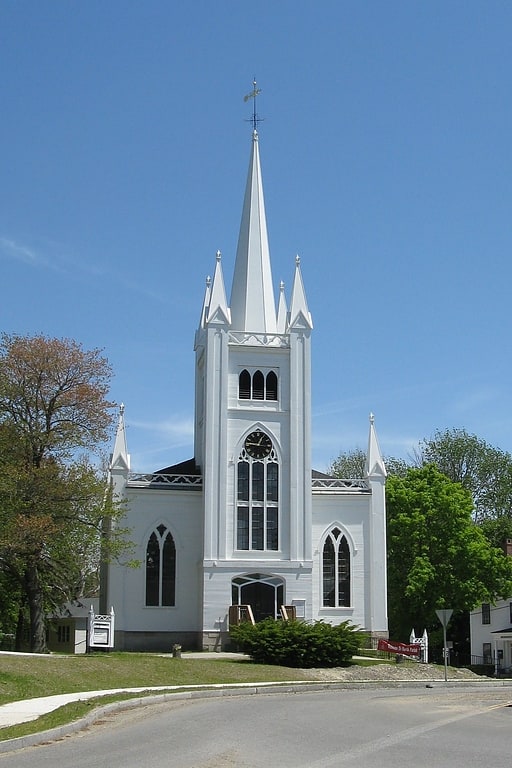
Unitarian universalist church in North Andover, Massachusetts. North Parish Church is a historic church in North Andover, Massachusetts. It was designed by Richard Bond and built in 1836. The building's architecture is called Cardboard Gothic architecture. It is located at 190 Academy Road.[9]
Address: 190 Academy Rd, Lawrence (North Andover)
Bellevue Cemetery
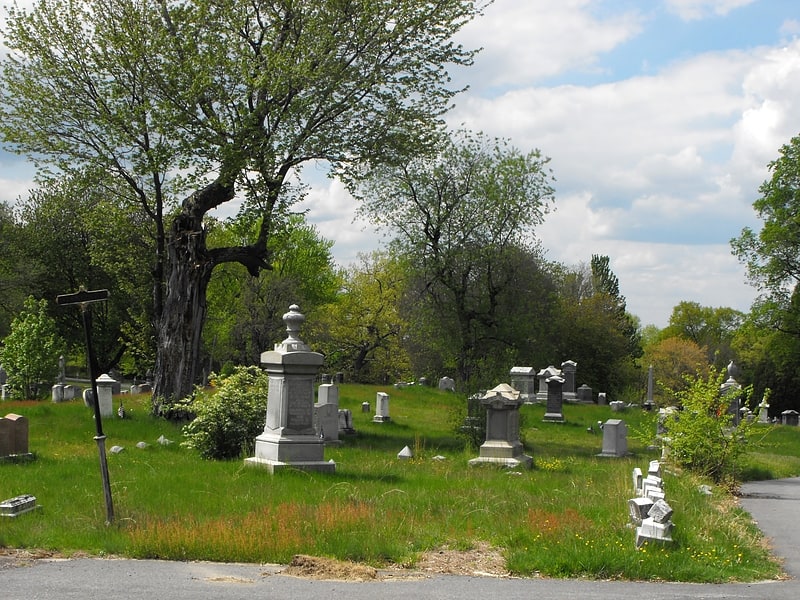
Cemetery in Lawrence, Massachusetts. Bellevue Cemetery is a historic cemetery in Lawrence and Methuen, Massachusetts. Established in 1847 and owned by the city of Lawrence, it is the first and principal cemetery of the city and a notable example of a rural cemetery. In conjunction with adjacent cemeteries and Lawrence's High Service Water Tower and Reservoir, it provides part of the small city's largest area of open space. The cemetery was added to the National Register of Historic Places in 2003.[10]
Grace Episcopal Church
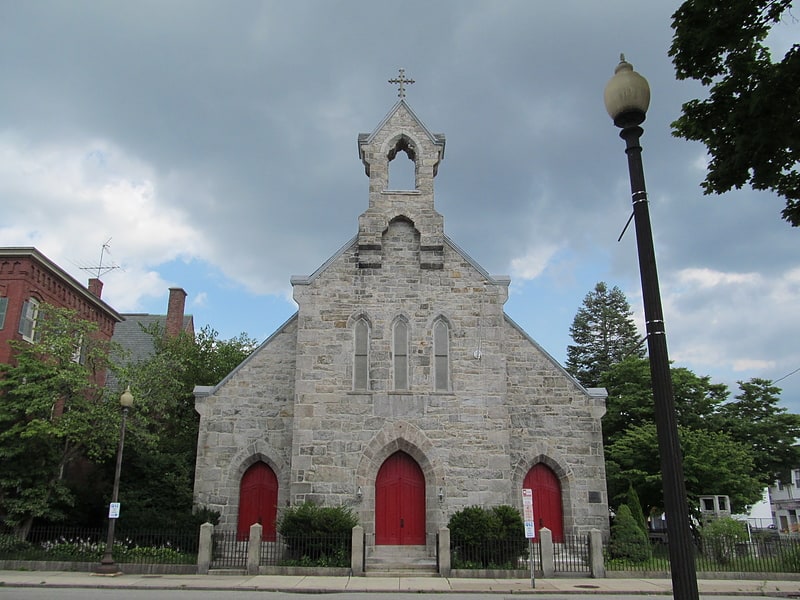
Church building in Lawrence, Massachusetts. Grace Episcopal Church is a historic Episcopal church building at Common and Jackson Streets in Lawrence, Massachusetts. The site on which it as built has been used for religious facilities since 1846, around the time of Lawrence's founding. This simple Gothic Revival stone structure was built in 1852, replacing an earlier wooden chapel, and was enlarged in 1892. The church is also notable for its association with the Lawrence family: William Lawrence, grandson of founder Abbott Lawrence, became its minister in 1876.
The church was listed on the National Register of Historic Places in 1976.[11]
Address: 35 Jackson St, 01840-1626 Lawrence (Lawrence)
Gleason Building
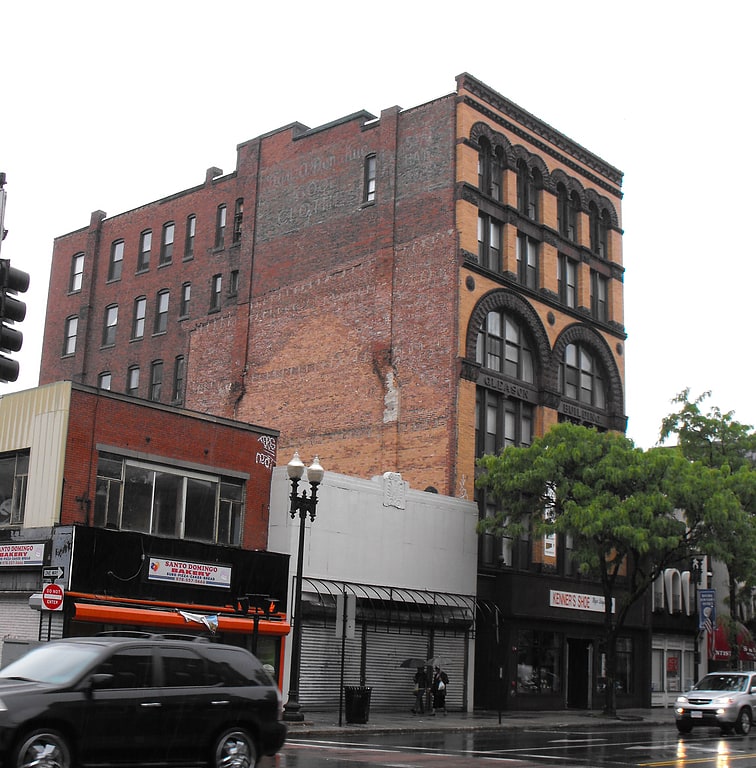
Commercial building in Lawrence, Massachusetts. The Gleason Building is a historic commercial building located at 349-351 Essex Street in Lawrence, Massachusetts.[12]
Lawrence Experiment Station
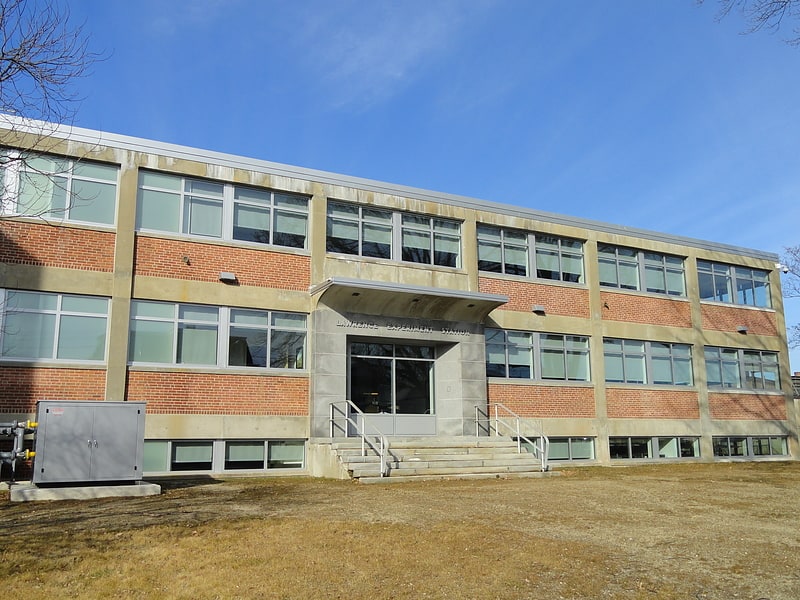
The Lawrence Experiment Station, now known as the Senator William X. Wall Experiment Station, was the world's first trial station for drinking water purification and sewage treatment. It was established in 1887 in Lawrence, Massachusetts. A new, 22,000 square foot building opened in 1954 at 37 Shattuck Street. In 1975, the station was designated as a National Historic Civil Engineering Landmark by the American Society of Civil Engineers. In 1993, the facility was renamed after state senator William X. Wall, who had lobbied for the construction of the new station in the 1950s.[13]
The Everett Mills

The Everett Mills are a group of buildings consisting of the Everett and Stone Mills in Lawrence, Massachusetts. A former cotton textile mill, it was the site of the start of the Bread and Roses strike in 1912 and the one time workplace of Robert Frost.[14]
Address: 15 Union St, 01840 Lawrence (Lawrence)
Essex Company Offices and Yard
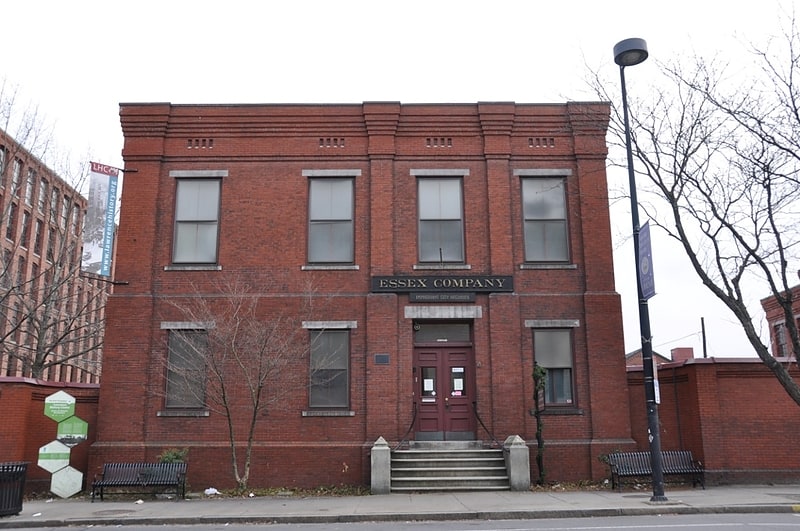
Building in Lawrence, Massachusetts. The Essex Company Offices and Yard, at 6 Essex Street in Lawrence, Massachusetts, are the historic headquarters of the Essex Company, which was responsible for Lawrence's founding in 1847 and development in the 19th century. These facilities were built in 1883–84, and consist of a street-facing office building and four others: a carpenter's shop, foundry, garage, and storage building. They were designed by Hiram Mills, the Essex Company's chief engineer. It is currently the home of the Lawrence History Center's Immigrant City Archives and Museum.
The complex was listed on the National Register of Historic Places in 1979, and included in the North Canal Historic District in 1984.[15]
Blakeley Building
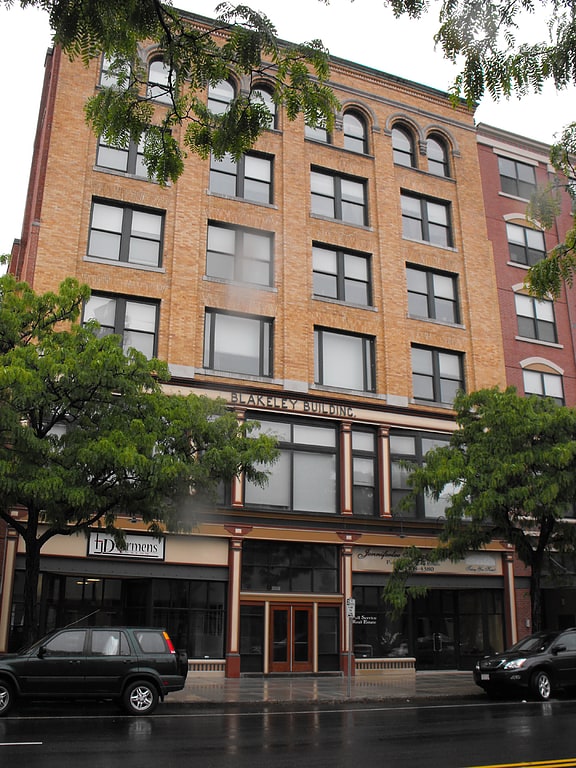
Commercial building in Lawrence, Massachusetts. The Blakeley Building is a historic commercial building at 475-479 Essex St in central Lawrence, Massachusetts. It is the only well-preserved 19th century remnant of a streetscape that extended for the entire block. The four story Classical Revival building was built in 1898 for Richard Barlow, at that time completing the block between Franklin and Hampshire Streets. Since then, the other buildings have either been demolished and replaced, or have been altered substantially. Construction is predominantly in brick, with granite and metal trim elements. The building houses retail establishments on the ground floor and office space on its upper floors.
The building was listed on the National Register of Historic Places in 2009.[16]
Wood Worsted Mill
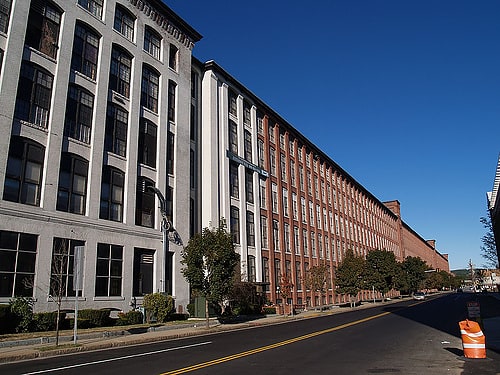
Mill in Lawrence, Massachusetts. The Wood Worsted Mill is located at South Union St. and Merrimack Street, on the south bank of the Merrimack River, in Lawrence, Massachusetts. The mill building was constructed between 1906 and 1909 for the American Woolen Company, and was dubbed by some locals as the "eighth wonder of the world" due to its size. It is a six-story brick building that is 1,300 feet long and 125 feet high, and encompasses some 17 miles of aisles. Its purpose when built was to perform the complete textile manufacturing cycle of worsted woolens, from raw material to finished fabric, under a single roof.
The surviving mill elements include the main building and a portion of a storehouse. The storehouse is a seven-story brick building located just east of the main building, of which approximately half remains from its original construction. The two sections (of an original four) were demolished in 2009, along with a number of other structures in the complex, including sections of the main mill building.
The main mill building as it now stands is divided into four parts, featuring Romanesque Revival styling executed in brick with granite and cast stone detailing. The first is an office section, which protrudes from the main body. Like the main part of the building it is six stories, but is topped by a clock tower. The other three sections were originally labelled D, E, and F, and extend eastward from the office. Section D is 33 window bays, E is 42, and F 45 window bays in length. There are three stairwell towers that interrupt the pier-and-spandrel construction of the length of the building on its south (street-facing) elevation. These stairhouses are where entry is gained to the premises, through doorways recessed under arches. The north facade, facing the river, is uniformly window bays, broken only by wrought iron fire escapes and a few bricked-up bays where the building was connected to the demolished A, B, and C sections via covered bridges over a railroad spur.
The mill complex was listed on the National Register of Historic Places on August 12, 2010. At the time of the listing, section D was being converted to residential housing.[17]
Buildings at 24–30 Summer St.
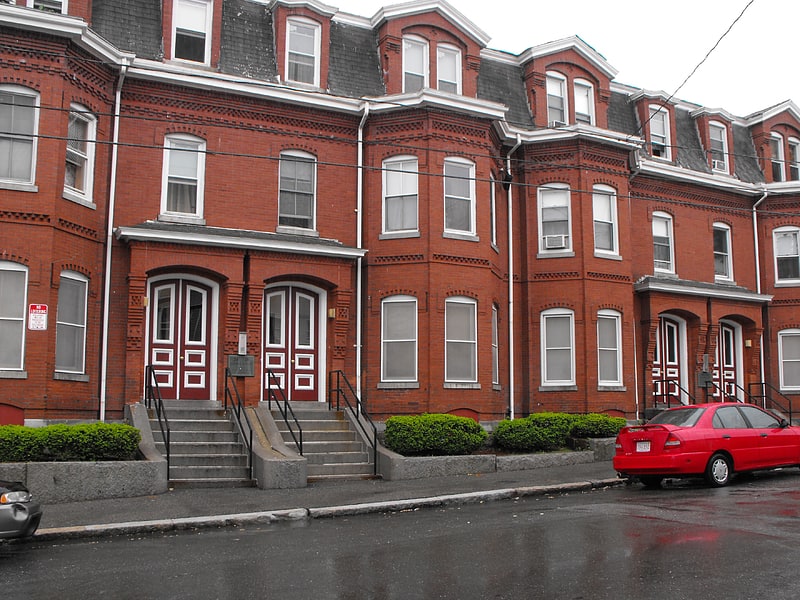
Building in Lawrence, Massachusetts. The buildings at 24–30 Summer St. are a series of brick rowhouses in Lawrence, Massachusetts. The three story Second Empire residences were built in 1877 for Joseph Bushnell and E. S. Yates as rental properties. They consist of four units, arranged in mirror-image pairs. Within each pair the entrances are in the center, and there is a projecting bay section on the outside, which rises to the top of the second floor, where the mansard roof begins. There are single-window dormers projecting from the roof above the doorways, and double-window dormers above the bay. Both the larger dormers and the entrances have segmented-arch settings. The doorways are flanked by decorative brickwork, and there are corbelled brickwork courses above the first and second-floor windows. The buildings have had only minor exterior alteration since their construction.
The buildings were listed on the National Register of Historic Places in 1985.[18]
Essex Company Machine Shop
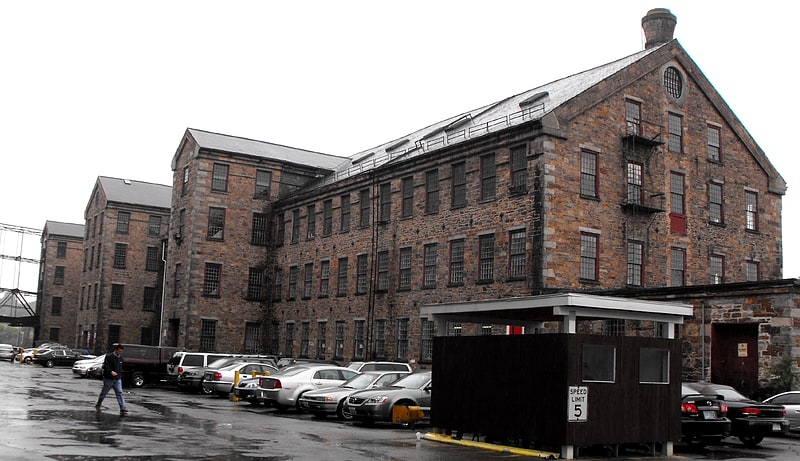
Essex Company Machine Shop, also known as Stone Mill or the Lawrence Machine Shop, is a historic machine shop on Union Street in Lawrence, Massachusetts. It was built in 1846 and added to the National Register of Historic Places in 1972.[19]
Merrimack Valley YMCA
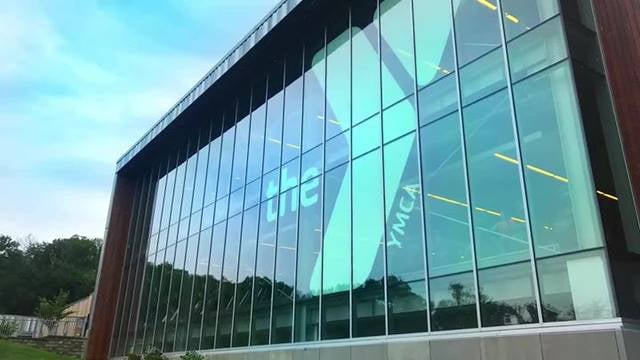
Relax in park, Park
Address: 101 Amesbury St, Lawrence (Lawrence)